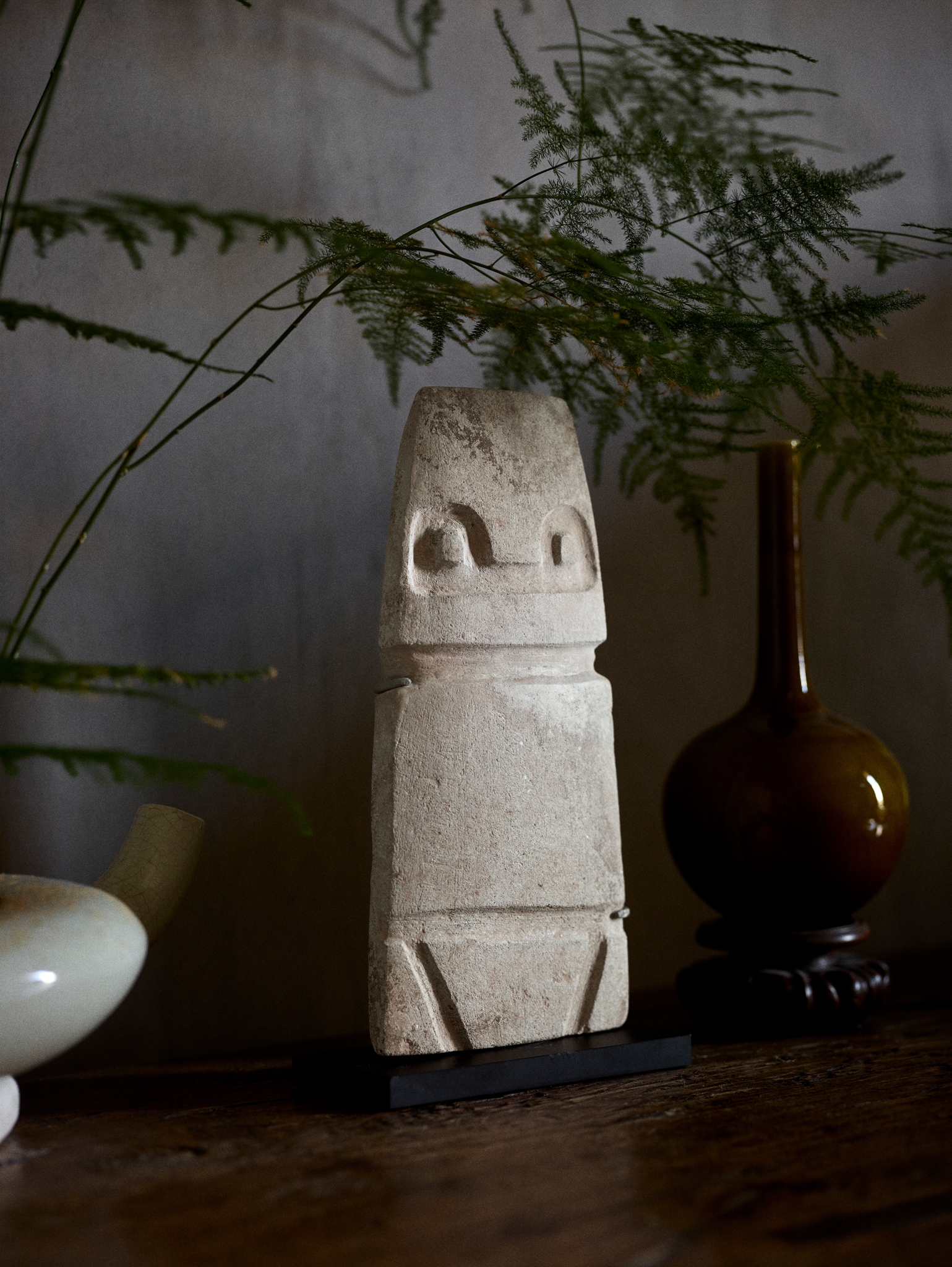VALDIVIA FIGURE
ECUADOR, C. 2300 - 2000 B.C.
Estimate: £8,000 - £12,000
Auction: 13 March 2025 from 13:00 GMT
Description
carved limestone, block-like, cubist form and recessed grooves indicating the stylised form, scattered surface deposits
Dimensions
22.8cm tall
Provenance
Private collection, Indianapolis, United States, 1997
Marianne and Robert Huber, New York, United States, 1980’s - 1997
Jacobus van Diemen 1970s - 1980s
Andrade's Collection pre 1970s
Footnote
One of the earliest sculptural traditions of the ancient Americas originated with the Valdivia culture, which began around 3550 B.C. along the Pacific coast of what is now Ecuador. Valdivian artists crafted figures from both stone and ceramic, depicting men, women, and animals in an array of sizes. Their work often featured stylised forms, blending naturalistic elements with symbolic abstraction. Sculptures like this one are believed to represent a stylised owl, possibly imbued with supernatural significance possibly linked to the bird’s nocturnal habits.
Examples of Valdivian sculpture can be found in the collections of esteemed sculptors Henry Moore and Antony Gormley, both of whom admired the simplicity and profound symbolism of Valdivia art. Moore, known for his organic and abstract forms, drew inspiration from the primal and timeless qualities of such artefacts, recognising their ability to convey universal themes with minimal detail.
For similar please see: Minneapolis Institute of Art, accession number 2004.104.2

